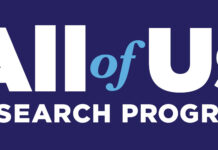American Lung Association Releases 2015 Report on Air Quality for California Cities and Counties
16th annual State of the Air 2015 report shows progress; challenges as millions live in areas with unhealthy air
LOS ANGELES, April 29, 2015 /PRNewswire-HISPANIC PR WIRE/ — This morning, the American Lung Association released State of the Air 2015, an annual report on air quality which lists both the cleanest and most polluted areas in the country. This year’s report shows continued progress and challenges in reducing ozone and particle pollution, and reinforces the importance of the state’s strong clean air and climate leadership in reducing the public’s exposure to harmful air. At the same time, the report shows that drought weather conditions caused upticks in particle pollution levels for much of the state, especially in the San Joaquin Valley, reminding us that climate change is threatening our clean air progress.
“The State of the Air 2015 report shows that California’s clean air laws and initiatives are working,” said Olivia Gertz, President and CEO of the American Lung Association in California. “However, over 70 percent of Californians – 28 million residents – live in counties plagued with unhealthy air during certain parts of the year. That means residents exposed to pollution are at greater risk for lung cancer, asthma attacks, heart attacks, and premature deaths. We must increase our efforts to cut pollution so all Californians can breathe clean and healthy air.”
Covering air pollution data from 2011-2013, the State of the Air 2015 shows that California cities still dominate lists for the most polluted areas in the nation for ozone (smog) as well as short-term and annual particle pollution. Several cities had both higher year round averages and unhealthy days on average of particle pollution driven largely by drought weather conditions. Specifically, of the top ten cities in the nation with the worst air pollution, California metropolitan areas rank as follows:
|
Ozone Pollution 6 out of the Top 10 |
Short-Term Particle Pollution |
Annual Particle Pollution |
|
#1 Los Angeles-Long Beach-Riverside |
#1 Fresno-Madera |
#1 Fresno-Madera |
|
#2 Visalia-Porterville-Hanford |
#2 Bakersfield |
#2 Bakersfield |
|
#3 Bakersfield |
#3 Visalia-Porterville, Hanford |
#3 Visalia-Porterville-Hanford |
|
#4 Fresno-Madera |
#4 Modesto-Merced |
#4 Modesto-Merced |
|
#5 Sacramento-Roseville |
#5 Los Angeles-Long Beach-Riverside |
#5 Los Angeles-Long Beach-Riverside |
|
#8 Modesto-Merced |
#6 San Jose-San Francisco-Oakland-Stockton |
#6 El Centro |
|
# 7 San Jose-San Francisco Oakland-Stockton |
Despite these rankings, the State of the Air Report also shows that many California cities made significant improvements in reducing unhealthy ozone and particle pollution over the history of the report. Major regions of the state have seen reductions in unhealthy ozone days of approximately 40 percent or more since the 2000 report, led by 80 percent or more reductions in bad air days in the Bay Area and San Diego regions. Five cities reached their lowest levels (Los Angeles, Visalia, Bakersfield, Sacramento, San Diego). For unhealthy particle pollution days, major reductions have occurred in the Bay Area (-74%), Sacramento (-73%), San Diego (-92%) and Southern California (-69%) since State of the Air 2004. The Los Angeles area achieved its lowest level of year round particle pollution to date. San Diego improved on all three measures to reach its best levels yet. Salinas was once again named one of the cleanest cities in the nation, one of only six cities to make all three cleanest city rankings.
California’s pollution problems are primarily caused by emissions from transportation sources, including cars, diesel trucks and buses, locomotives, ships and agricultural equipment, and other sources including oil refineries, manufacturing plants, residential wood burning and wildfires. The weather conditions, heat and geography in California facilitate smog and soot formation.
Ongoing drought weather conditions are contributing to worsening particle pollution in many areas of the state, as shown in this year’s report. Many cities had higher year-round particle averages, including Visalia, Bakersfield, Sacramento, Modesto-Merced, El Centro, San Jose-San Francisco, and San Luis Obispo. Many cities also had more unhealthy particle days on average, including Los Angeles, Visalia, Bakersfield, Sacramento, Modesto-Merced and San Luis Obispo.
“Air pollution remains a pervasive public health threat, contributing to thousands of hospitalizations, emergency room visits, and deaths every year to our most vulnerable citizens – children, seniors, and those with lung disease such as lung cancer, chronic bronchitis, or emphysema,” said Alexander Sherriffs, MD, a family physician in Fresno and volunteer physician of the American Lung Association in California. “Cleaner air saves lives, and can lead to better health and quality of life for everyone.”
California’s progressive tailpipe and fuel standards, advanced clean car and zero emission vehicle rules, cleanup of heavy duty diesel trucks and buses and strong incentive funding programs are driving down health and climate impacts from our transportation sector, the leading source of pollution in our state.
Climate change poses a growing threat to clean air progress. “Reducing pollution will only become more challenging because climate change increases the risk for ozone and particle pollution, and make cleaning up the air harder in the future,” said David Tom Cooke, MD, FCCP, FACS, lung surgeon and member of the American Lung Association in California Governing Board. “We need stronger air quality standards to limit pollution to protect our health today and that of future generations.”
Going forward, California must redouble its efforts to transition off of fossil fuels for transportation and energy generation by investing in the rapid development of zero emissions solutions. Key solutions to help improve air quality across the state are to invest in sustainable zero- and near-zero emission freight technologies, deploy zero emission vehicles (ZEV) and fuels, maintain and enhance wood burning controls, and focus community planning on walking, biking and transit alternatives to driving.
The American Lung Association in California calls for several steps to advance the fight for a healthier, clean air future for all Californians and safeguard the air everyone breathes:
- Support California’s healthy air and climate leadership (SB 350 and SB 32). Senate Bill 350 (de Leon and Leno) sets important new targets for petroleum reduction, clean, renewable power and energy efficiency. SB 32 (Pavley) sets mid-term and long-term greenhouse gas reduction goals to continue California’s leadership in cutting harmful pollutants that threaten public health, delay air quality progress and contribute to climate change.
- Expand cap and trade investments to reduce traffic and freight pollution. California is currently investing cap and trade funding to promote zero emission and near-zero emission solutions for cars, trucks, buses, freight transport and other mobile sources in all communities, but more is needed. Given the additional funding available this year, the legislature should increase funding for low-carbon transportation, cleaner freight and healthier communities that support transit and active transportation.
- EPA must adopt strong final carbon pollution standards. The EPA needs to issue tough final standards to reduce carbon pollution from power plants, and strengthen the limits on the ozone and particle pollution that blow across state lines.
- Protect the Clean Air Act. Congress needs to ensure that the protections under the Clean Air Act remain effective and enforced. The Clean Air Act is a critical public health law.
- Strengthen the outdated ozone standards. The EPA must adopt an up-to-date ozone limit that follows the current health science and the law to protect human health. Stronger standards will drive much needed cleanup of ozone pollution across the nation and support the need for faster clean air progress in California.
While many communities are at risk due to unhealthy air, it is important to note that some communities face higher risks due to their proximity to freeways, rail yards, freight corridors and other local pollution sources. Lower income communities and communities of color often bear the burdens caused by these local air pollution sources. The Lung Association promotes equity in addressing clean air and climate impacts to ensure that all communities in California can breathe healthy air.
To see how your community ranks in “State of the Air 2015,” to learn how to protect yourself and your family from air pollution, and to join the fight for healthy air, visit: www.StateOfTheAir.org. This year, the American Lung Association in California launched Doctors for Climate Health, a social media campaign featuring leading physicians highlighting the critical health impacts of climate pollution on our health today as well as future generations of Californians.
About the American Lung Association
Now in its second century, the American Lung Association is the leading organization working to save lives by improving lung health and preventing lung disease. With your generous support, the American Lung Association is “Fighting For Air” through research, education, and advocacy. For more information about the American Lung Association or to support the work it does, call 1-800-LUNG-USA (1-800-586-4872) or visit www.lung.org/california.
Media Contact: Maria Bernabe, (o) 310-735-9184, (c) 818-625-1810, Maria.Bernabe@lung.org





